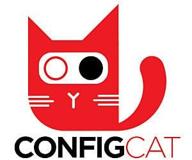Feature Management
The Power of Effective Feature Management in Software Development
Introduction
In the dynamic world of software development, feature management plays a vital role in ensuring seamless and efficient product releases. It encompasses a range of practices and tools that enable continuous deployment, effective rollout strategies, best practices for feature flag management, and the use of feature toggles specifically tailored for agile development teams. This article delves into the significance of feature management and explores how these key elements contribute to successful software development.
The Role of Feature Management Tools for Continuous Deployment
Feature management tools are essential components for achieving efficient and reliable continuous deployment in software development projects. These tools provide a centralized platform to control the release of features, allowing development teams to manage the entire process seamlessly. By utilizing feature management tools for continuous deployment, teams can automate the deployment process, reduce the risk of errors, and maintain control over feature releases, ensuring a consistent and stable experience for end-users.
Strategic Feature Rollout Strategies for Software Development
Feature rollout strategies are crucial for software development projects as they enable teams to introduce new features to end-users in a controlled and incremental manner. A well-executed feature rollout strategy minimizes risks associated with new feature releases, prevents potential issues that could negatively impact users, and allows for efficient feedback collection. By employing strategies such as phased rollouts, feature targeting, and gradual expansion, development teams can effectively manage user adoption, gather valuable insights, and iterate on features based on user feedback.
Best Practices for Feature Flag Management
Feature flag management is a critical practice that allows development teams to control the visibility and behavior of specific features within an application. Implementing best practices for feature flag management ensures that feature releases are flexible, safe, and can be easily rolled back if necessary. Teams should establish clear naming conventions, version control mechanisms, and documentation practices to maintain a robust feature flag management process. By following these best practices, teams can achieve faster feature rollouts, minimize disruptions, and improve collaboration across development and operations teams.
Utilizing Feature Toggles for Agile Development Teams
Feature toggles, or feature flags, are powerful mechanisms that enable agile development teams to control the activation or deactivation of specific features during runtime. By utilizing feature toggles, teams can decouple feature deployment from code deployment, allowing for faster iterations and the ability to release new features independently. Agile teams can leverage feature toggles to conduct A/B testing, gradually expose new functionality to users, and ensure smoother releases. This approach empowers teams to react quickly to changing requirements, gather user feedback, and iterate on features without disrupting the overall development process.
Conclusion
Effective feature management is a cornerstone of successful software development. By leveraging feature management tools for continuous deployment, employing strategic feature rollout strategies, implementing best practices for feature flag management, and utilizing feature toggles for agile development teams, organizations can streamline their development processes, reduce risks, and improve collaboration. Embracing these key elements of feature management allows software development teams to deliver high-quality products that meet user expectations while maintaining a competitive edge in the fast-paced world of technology.


5 Review
Flagsmith is a robust Feature Flag and Remote Config service. Use our hosted API, deploy to your own private cloud, or run on-premises. Flagsmith makes it easy to create and manage features flags across web, mobile, and server side applications. Just wrap a section of code with a flag, and then use Flagsmith to toggle that feature on or off for…
Read more about this company

4 Review
Molasses is a high powered feature flag suite for teams that want to move fast but want to control the slow drip of features to customers. It combines rich integrations with support for several languages and frameworks, like Golang, React, and Nodejs.


4 Review
ConfigCat is the cross-platform feature flag service for Teams. It is a hosted service with a web app for feature management, and SDKs for all major languages. ConfigCat is cross-platform: a single place to manage frontend, backend, mobile, and desktop apps. % rollouts; User targeting; Environment support; Polling; Webhooks; SSO; MFA; Audit log; Clear…
Read more about this company
4 Review
Airship's feature flagging platform is how modern teams manage features. Phased rollouts, split test features, deploy code continuously, and more.


3 Review
Switch over is a Software As A Service Solution (SaaS) that companies in every industry can use to accelerate their software development processes. Our clearly arranged flag management feature allows you to switch your functions on and off at any time.


3 Review
CloudBees Feature Management is an enterprise-ready feature flag management solution, with robust deployment rules, audience segmentation and an experimentation framework for controlling which audiences are exposed to what features. Feature flagging is a method to show or hide specific software features at runtime. Features are coded with a flag and…
Read more about this company- Feature management tools are used to facilitate continuous deployment in software development projects. They provide a centralized platform for managing feature releases, automating the deployment process, reducing errors, and maintaining control over feature visibility and behavior.
- Feature rollout strategies are crucial as they enable controlled and incremental introduction of new features to end-users. These strategies minimize risks, prevent potential issues, and allow for efficient feedback collection, ultimately improving the overall user experience.
- Best practices for feature flag management include establishing clear naming conventions, version control mechanisms, and documentation practices. These practices ensure flexibility, safety, and the ability to roll back features if needed, leading to faster feature rollouts, improved collaboration, and minimized disruptions.
- Feature toggles, also known as feature flags, offer agile development teams the ability to control the activation or deactivation of specific features during runtime. This decoupling of feature deployment from code deployment allows for faster iterations, independent feature releases, A/B testing, gradual exposure of new functionality to users, and improved responsiveness to changing requirements.

